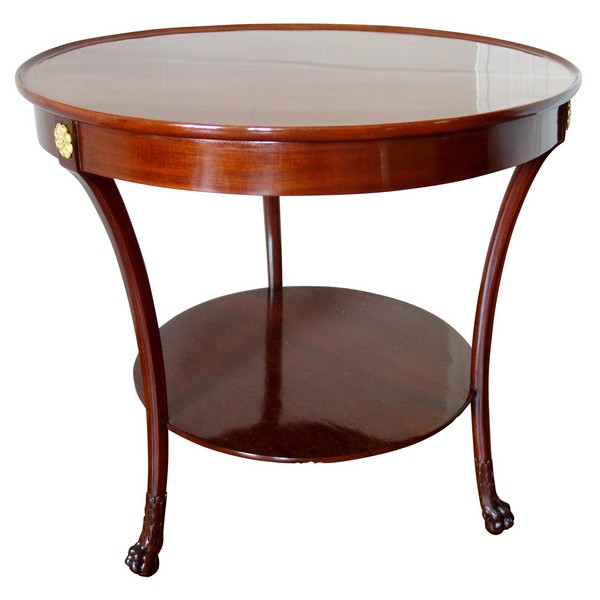
STATUS : SOLD
PRICE : NC.
CONDITION : Excellent
AVAILABLE QUANTITY : 0
SHIPPING :
Shipping and leadtime depends on your location. Please contact us to know the shipping price and organize delivery.
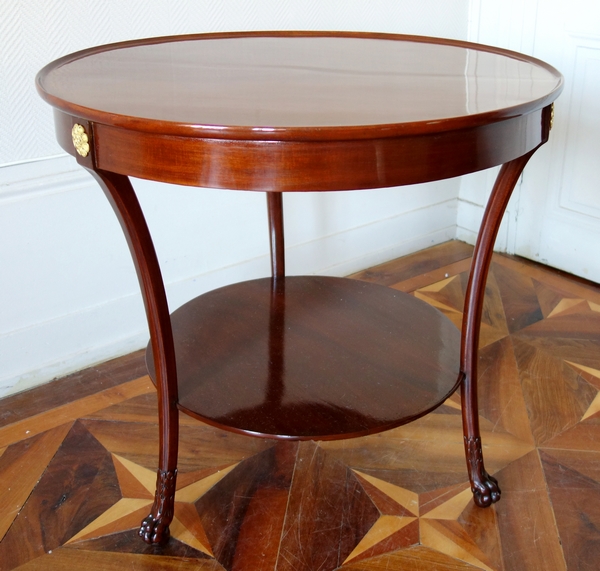
+ de photos
Consulate (early Empire) mahogany & ormolu tripod pedestal table, France - late 18th century circa 1795-1800.
Very beautiful Parisian production in the so-called Return from Egypt style that became fashionable at the very end of 18th century and in the 1800s. This style is the "antechamber" of Empire style.
Our piece is not stamped, but the perfection of proportions, the finish, she sculpture are the mark of a great Parisian cabinetmaker, most probably Bernard Molitor, who made several models with similar lines.
Bernard Molitor (1755 - 1833), master in 1787, quickly became one of the first Parisian cabinetmakers and has received orders from the Crown since 1788. Molitor was very innovative ; he is a precursor of Empire style. From the end of Louis XVI period, he announced Empire style using Egyptian women busts, palm friezes or griffins that were widely used afterwards under French Empire. Molitor was very sucessfull until French Restoration. Molitor pieces of furniture are exposed in the biggest museums and collections.
Our table was completely restored with a traditional varnish. The plate was repaired. Beautiful and rare collector's furniture.
Diameter : 78cm
Height : 72.5cm

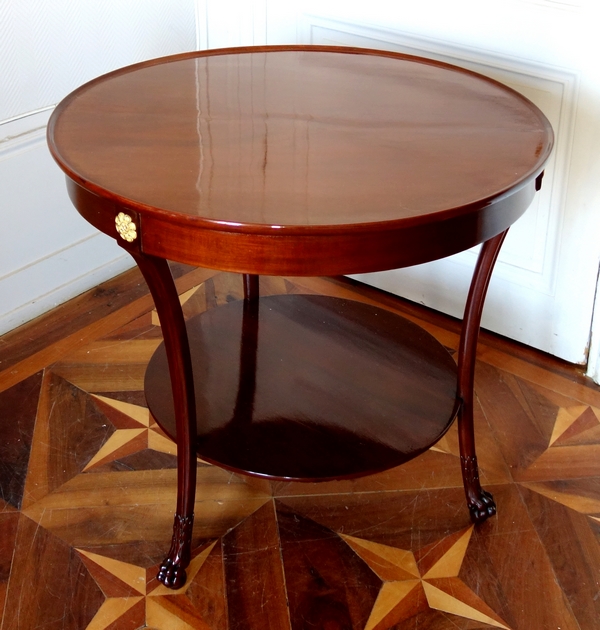
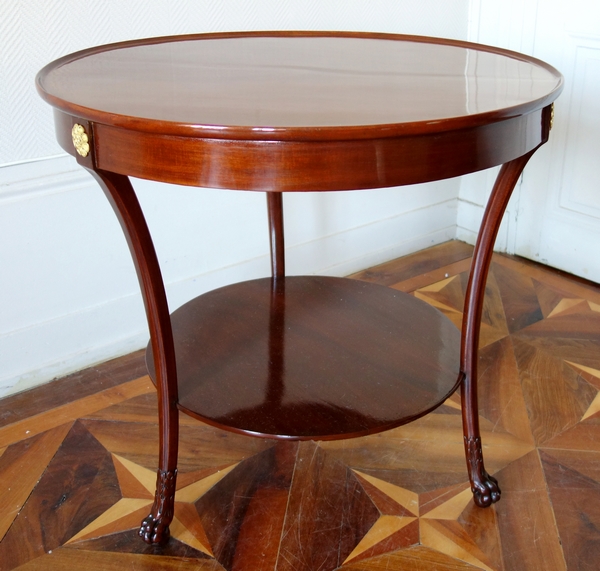
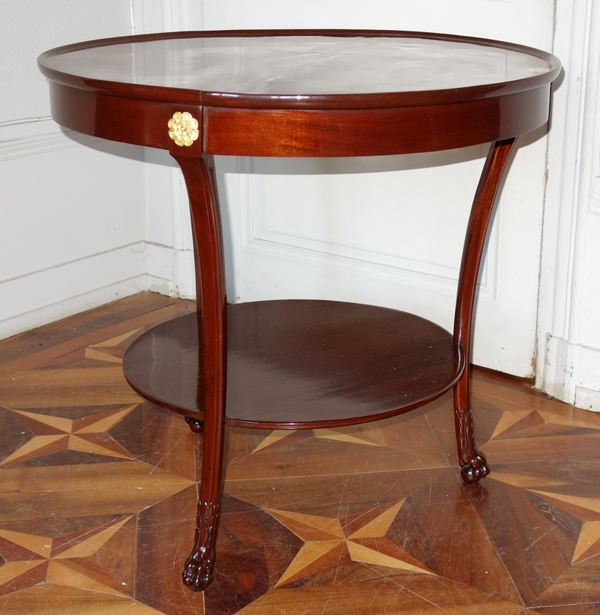
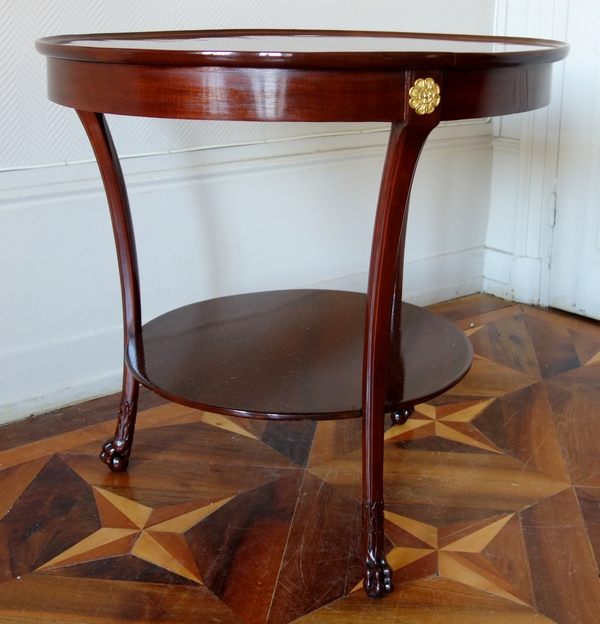
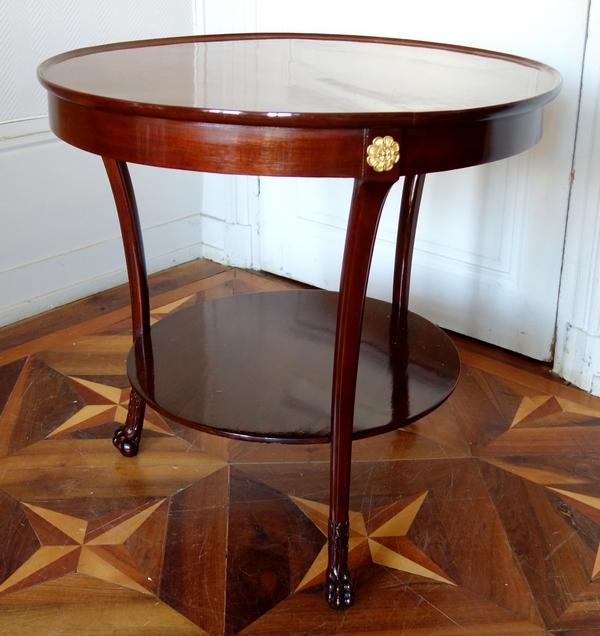
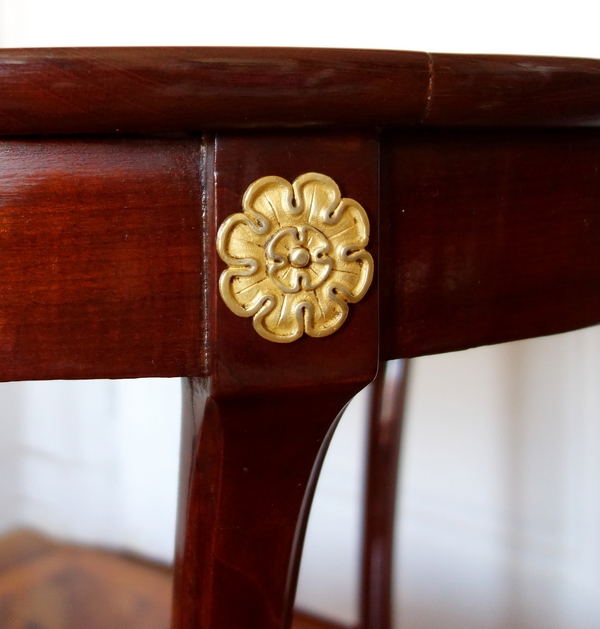
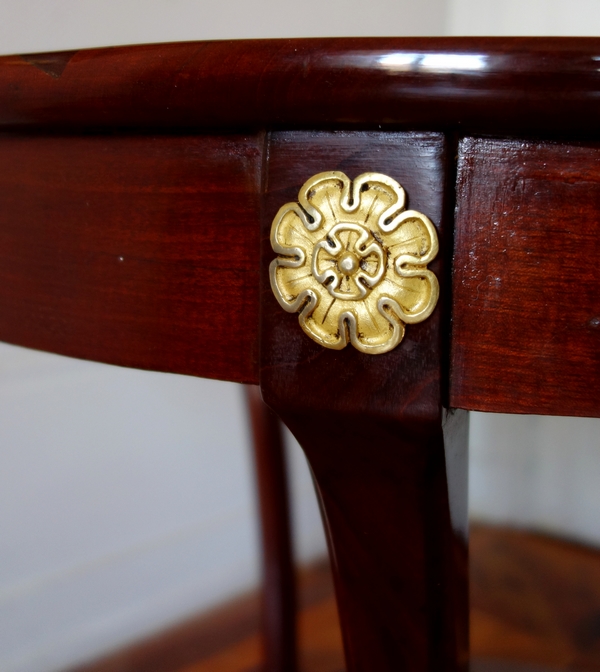
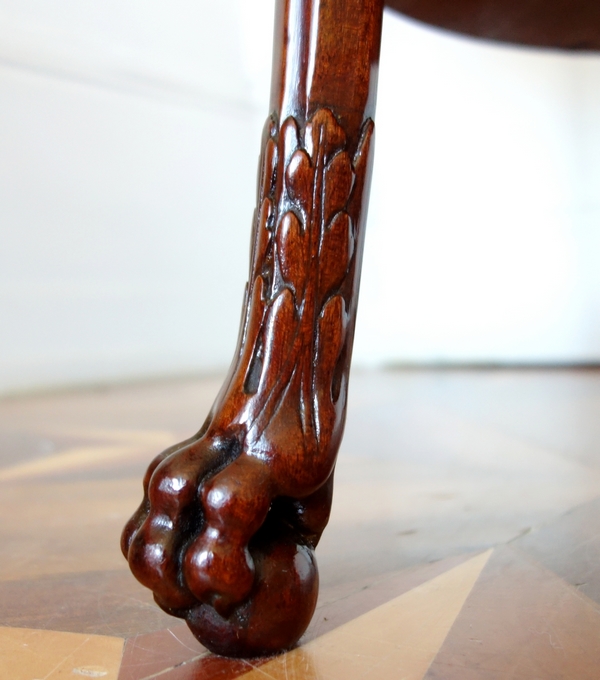
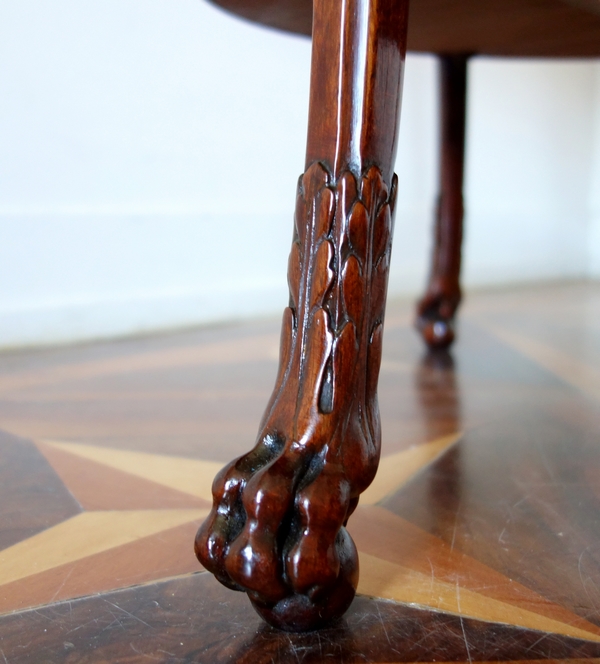
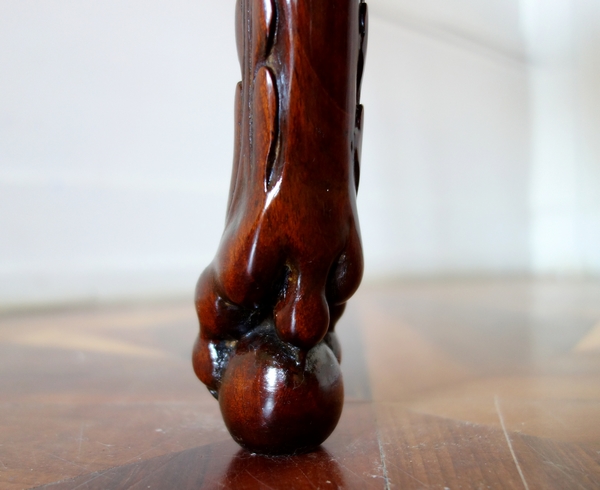
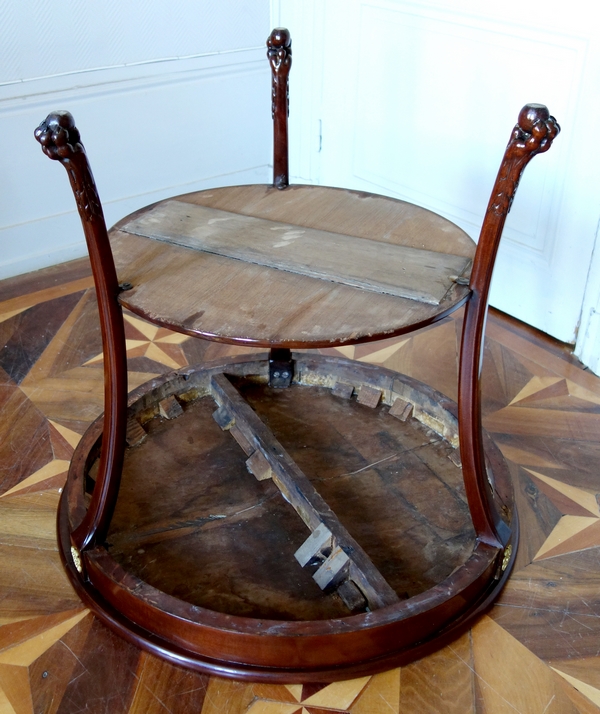
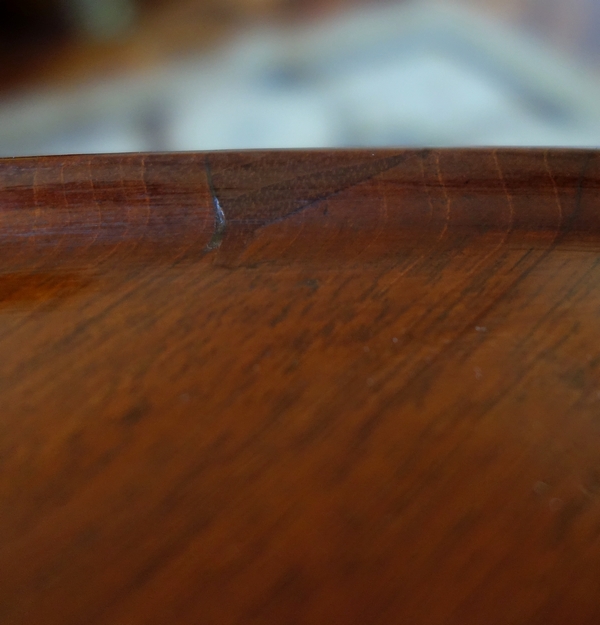
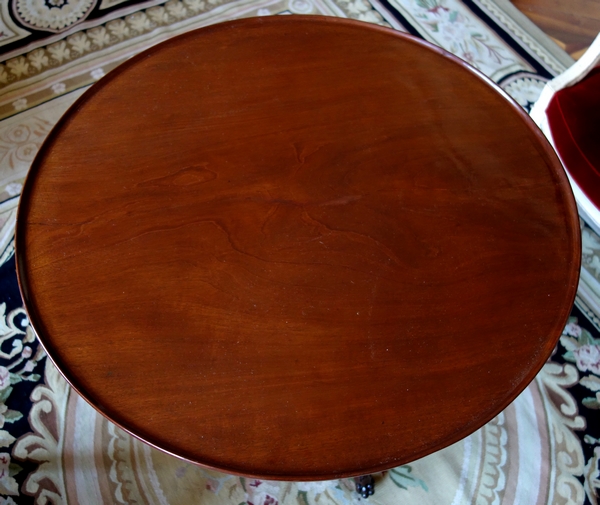
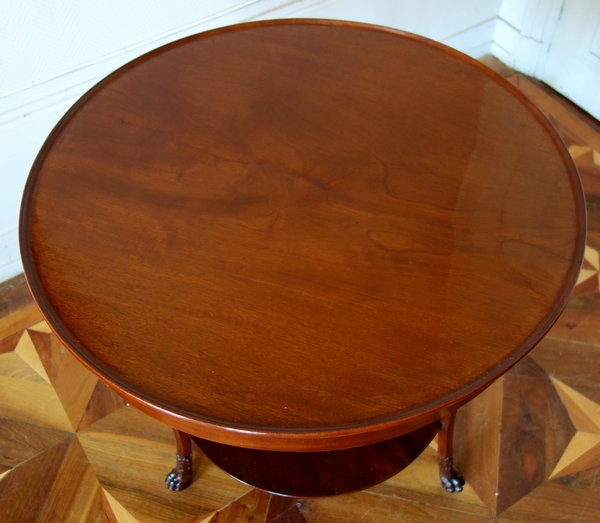
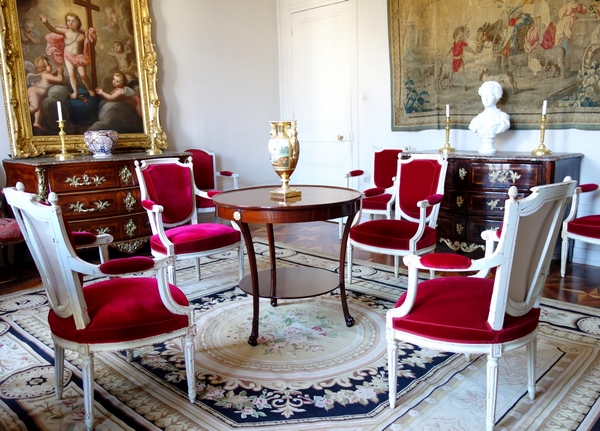
YOU MIGHT ALSO LIKE...